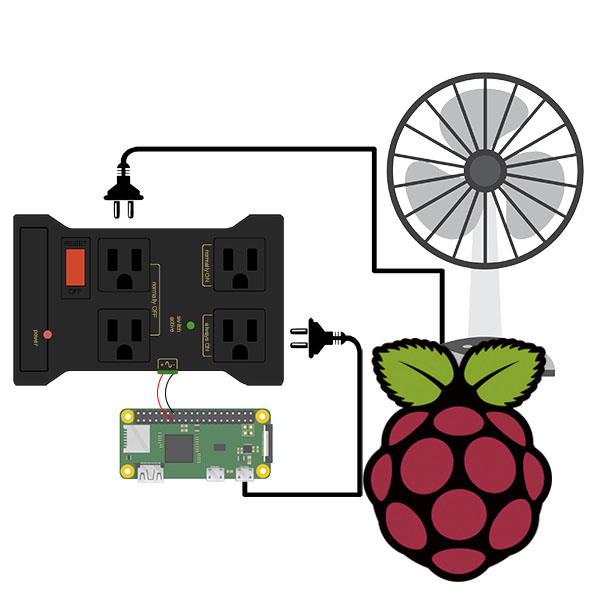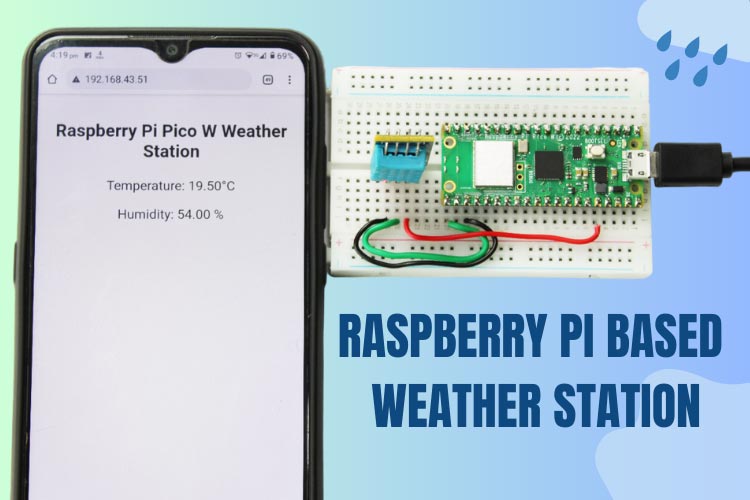Imagine this: you’ve got a Raspberry Pi sitting on your desk, ready to become the brain of your next big project. But where do you start? Enter the world of free IoT platforms for Raspberry Pi—a game-changer for makers, hobbyists, and even professionals. These platforms turn your tiny device into a powerhouse capable of controlling smart homes, monitoring weather, or even running an entire factory. Whether you’re a beginner or a seasoned pro, the right platform can make all the difference.
Now, let’s be real here. The Internet of Things (IoT) is not just a buzzword anymore. It’s a revolution that’s transforming how we interact with technology. And guess what? You don’t need a massive budget to jump in. With free IoT platforms tailored for Raspberry Pi, you can dive into the world of connected devices without breaking the bank.
So, buckle up, because we’re about to break down everything you need to know about free IoT platforms for Raspberry Pi. From setting up your first project to troubleshooting common issues, this guide has got your back. Let’s make some magic happen!
Read also:Telegram Link Wasmo Your Ultimate Guide To Joining The Community
Table of Contents
- Introduction to Free IoT Platforms for Raspberry Pi
- What is Raspberry Pi and Why It Rocks
- Top Free IoT Platforms for Raspberry Pi
- How to Choose the Right Platform
- Step-by-Step Setup Guide
- Cool Project Ideas to Get You Started
- Common Issues and How to Fix Them
- Cost vs. Benefits Analysis
- Why Community Support Matters
- Future Trends in IoT and Raspberry Pi
Introduction to Free IoT Platforms for Raspberry Pi
Alright, let’s kick things off with a quick overview. IoT platforms are basically software tools that help you connect, manage, and analyze data from IoT devices. And when it comes to Raspberry Pi, these platforms become your best friend. Why? Because Raspberry Pi is a tiny computer that can run complex applications, and pairing it with the right IoT platform amplifies its capabilities tenfold.
Now, here’s the kicker: not all platforms are created equal. Some are paid, some are bloated, and others just don’t cut it. But the good news is, there are plenty of free IoT platforms out there that are perfect for Raspberry Pi. These platforms offer a range of features, from cloud connectivity to real-time data visualization, all without costing you a dime.
Why Choose a Free IoT Platform?
Let’s face it—building IoT projects can get expensive real fast. Hardware, software licenses, and cloud services can add up quickly. That’s why free IoT platforms are such a game-changer. Not only do they save you money, but they also provide a flexible and scalable solution for your projects. Plus, most of these platforms have active communities and tons of resources to help you along the way.
What is Raspberry Pi and Why It Rocks
Before we dive deeper into IoT platforms, let’s take a moment to appreciate the star of the show: Raspberry Pi. This little device is basically a single-board computer that’s small, affordable, and incredibly powerful. It’s perfect for tinkering, learning, and building all sorts of cool projects.
Here’s why Raspberry Pi is such a big deal:
- Compact and lightweight design
- Multiple GPIO pins for connecting sensors and actuators
- Supports a wide range of operating systems, including Linux
- Highly customizable and extensible
- Massive community support with tons of tutorials and forums
So, whether you’re building a smart home system, a weather station, or even a robot, Raspberry Pi has got your back.
Read also:Is Ivory Hills Japan Real Unveiling The Truth Behind This Enigmatic Location
Key Features of Raspberry Pi
Let’s break down some of the key features that make Raspberry Pi so awesome:
- Processing Power: Depending on the model, Raspberry Pi can pack quite a punch with multi-core processors.
- Connectivity Options: Built-in Wi-Fi, Bluetooth, and Ethernet make it easy to connect to the internet and other devices.
- Storage: Supports microSD cards for storage, allowing you to expand as needed.
- GPIO Pins: These pins let you connect all sorts of sensors, motors, and other peripherals.
Top Free IoT Platforms for Raspberry Pi
Now that you know what Raspberry Pi is capable of, let’s talk about the free IoT platforms that can take your projects to the next level. Here are some of the best options out there:
1. Node-RED
Node-RED is a visual programming tool that makes it easy to wire together hardware devices, APIs, and online services. It’s perfect for beginners and advanced users alike, thanks to its drag-and-drop interface. Plus, it integrates seamlessly with Raspberry Pi, making it a top choice for IoT projects.
2. Home Assistant
If you’re into smart home automation, Home Assistant is a must-try. It’s an open-source platform that lets you control all your smart devices from one place. Best of all, it runs natively on Raspberry Pi, giving you complete control over your setup.
3. ThingsBoard
ThingsBoard is a powerful IoT platform that offers real-time data visualization, device management, and rule engine capabilities. It’s a bit more advanced than some of the other options, but its flexibility and scalability make it worth the effort.
4. Cayenne
Cayenne is another great option for beginners. It offers a user-friendly interface and a wide range of pre-built widgets to help you get started quickly. Plus, it supports a variety of hardware platforms, including Raspberry Pi.
5. Eclipse IoT
Eclipse IoT is an open-source project that provides a suite of tools for building IoT applications. It’s a bit more technical than some of the other options, but its robust feature set and active community make it a solid choice for serious projects.
How to Choose the Right Platform
With so many options available, choosing the right IoT platform for your Raspberry Pi project can be overwhelming. Here are some factors to consider:
- User Interface: If you’re new to IoT, a platform with an intuitive interface will save you a lot of headaches.
- Features: Make sure the platform offers the features you need for your project, such as data visualization, device management, and rule engines.
- Community Support: Look for platforms with active communities and plenty of resources, such as tutorials and forums.
- Scalability: Consider whether the platform can grow with your project over time.
Pro Tip:
Start with a platform that matches your skill level and project requirements. Don’t be afraid to experiment with different options to see what works best for you.
Step-by-Step Setup Guide
Ready to get your hands dirty? Here’s a step-by-step guide to setting up a free IoT platform on your Raspberry Pi:
- Install the Operating System: Start by installing the latest version of Raspberry Pi OS on your microSD card.
- Connect to the Internet: Make sure your Raspberry Pi is connected to the internet via Wi-Fi or Ethernet.
- Install the IoT Platform: Follow the platform’s documentation to install it on your Raspberry Pi. Most platforms offer simple installation scripts or packages.
- Configure Devices: Connect your sensors, actuators, and other peripherals to your Raspberry Pi and configure them in the platform.
- Test and Tweak: Once everything is set up, test your setup and tweak as needed to optimize performance.
Common Mistakes to Avoid
Here are some common mistakes to watch out for:
- Not checking compatibility between the platform and your Raspberry Pi model.
- Ignoring security settings, which can leave your devices vulnerable to attacks.
- Skipping the documentation, which can lead to unnecessary frustration.
Cool Project Ideas to Get You Started
Now that you’ve got your platform set up, it’s time to start building! Here are some cool project ideas to inspire you:
- Smart Home Automation: Use Home Assistant to control your lights, thermostat, and other smart devices.
- Weather Station: Build a weather station with sensors for temperature, humidity, and pressure, and visualize the data with Node-RED.
- Security System: Set up a security system with motion detectors and cameras, and receive alerts on your phone.
- Smart Garden: Monitor soil moisture, temperature, and light levels to keep your plants happy and healthy.
Pro Tip:
Start small and gradually add complexity to your projects. This will help you learn and grow without getting overwhelmed.
Common Issues and How to Fix Them
No matter how careful you are, things can still go wrong. Here are some common issues you might encounter and how to fix them:
- Connection Issues: Make sure your Raspberry Pi is connected to the internet and that the platform’s server is running.
- Device Compatibility: Double-check that your sensors and peripherals are compatible with the platform.
- Performance Problems: If your Raspberry Pi is running slow, try optimizing your setup or upgrading your hardware.
Where to Get Help
Don’t be afraid to reach out for help when you’re stuck. Platforms like Node-RED and Home Assistant have active forums and communities where you can ask questions and get advice.
Cost vs. Benefits Analysis
Let’s talk dollars and cents for a moment. While free IoT platforms save you money upfront, there are still some costs to consider:
- Hardware Costs: Depending on your project, you may need to invest in additional sensors, peripherals, or even a new Raspberry Pi model.
- Time Investment: Learning a new platform and setting up your project can take time, but the skills you gain are invaluable.
- Long-Term Savings: By using a free platform, you avoid costly subscriptions and licenses, making it easier to scale your projects over time.
Pro Tip:
Consider the long-term benefits of using a free IoT platform, such as flexibility, scalability, and community support, when evaluating the costs.
Why Community Support Matters
One of the biggest advantages of using free IoT platforms for Raspberry Pi is the strong community support. Whether you’re stuck on a problem or just looking for inspiration, chances are someone in the community has been there before.
Here’s why community support matters:
- Learning Opportunities: You can learn from others’ experiences and avoid common pitfalls.
- Collaboration: Many communities encourage collaboration, allowing you to work on projects with others.
- Resources: From tutorials to code snippets, communities offer a wealth of resources to help you succeed.
Future Trends in IoT and Raspberry Pi
As IoT continues to evolve, so does the role of Raspberry Pi in the ecosystem. Here are some trends to watch out for:
- Edge Computing: More devices will process data locally rather than relying on the cloud, making platforms like Raspberry Pi even more important.
- AI Integration: AI-powered IoT devices will become more common, enabling smarter and more autonomous systems.
- Security Enhancements: As IoT devices become more prevalent, security will be a top priority, driving the development of more secure platforms and protocols.
Pro Tip



